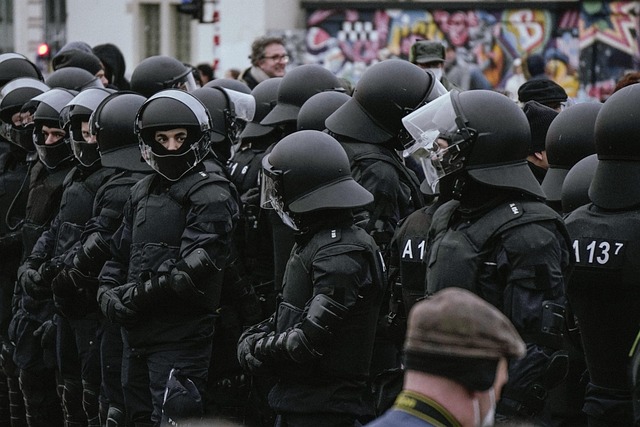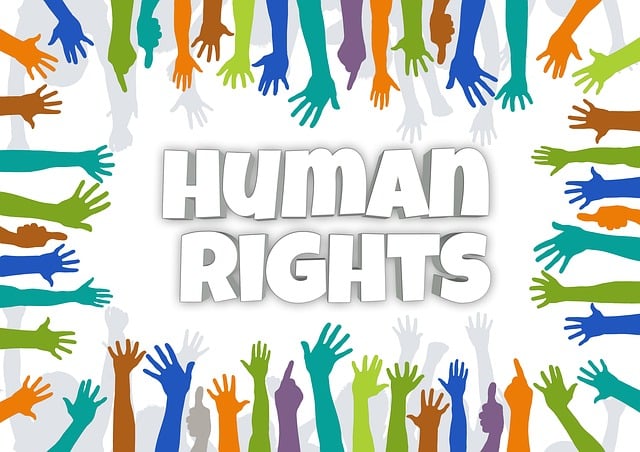Mail Wire Fraud: Strategies, Legalities, & Prevention Tactics

Mail wire fraud, a digital age crime using electronic deception, requires a multi-pronged approach……..
In the intricate web of criminal justice systems worldwide, plea bargaining stands as a pivotal strategy for managing caseloads and ensuring efficient legal processes. The concept of plea bargaining involves defendants admitting guilt to lesser charges or accepting negotiated sentences in exchange for reduced penalties. This article delves into the effectiveness of this practice in reducing court backlogs and its multifaceted impact on legal systems, economies, and societies. By exploring various facets, from historical perspectives to technological innovations, we aim to provide a comprehensive understanding of how plea bargaining shapes judicial landscapes and contributes to more manageable caseloads.
Definition: Plea bargaining is a negotiation process where a defendant pleads guilty or agrees to specific terms proposed by prosecutors, often resulting in a lesser charge or sentence than initially expected. Its primary goal is to reach a mutually acceptable resolution without the need for a trial.
Core Components:
Historical Context: The practice of plea bargaining has deep roots, dating back to ancient legal systems where it served as a practical means of dispute resolution. Over time, it evolved and became more structured, particularly in common law jurisdictions. The 20th century saw its widespread adoption, especially with the surge in criminal cases and the need for more efficient justice delivery.
Significance: Effectiveness in reducing caseloads is just one aspect of plea bargaining’s significance. It offers several advantages:
The effectiveness of plea bargaining is not confined to specific regions; its impact spans across diverse legal systems worldwide. However, the implementation and acceptance of this practice vary significantly:
Trends Shaping Plea Bargaining:
| Trend | Impact | Example |
|---|---|---|
| Increasing Caseloads | Drives the need for efficient case management, making plea bargains more prevalent. | US federal courts report a steady rise in criminal cases, leading to longer waiting periods and greater reliance on plea agreements. |
| Overburdened Courts | Plea bargaining becomes a vital tool to manage court dockets and reduce delays. | In many European countries, judicial backlogs are significant, prompting prosecutors to negotiate more pleas to ease the burden. |
| Fair Trial Rights | Ensures that plea bargains adhere to due process and fair treatment standards. | The European Court of Justice has emphasized the importance of informing defendants about their rights during plea negotiations. |
| Technology Integration | Enhances efficiency in record-keeping, case management, and communication, streamlining plea bargaining processes. | Legal software solutions enable secure digital exchanges between prosecutors and defense lawyers, expediting negotiations. |
The economic implications of effective plea bargaining are multifaceted, impacting legal systems, governments, and societies:
Technology plays a pivotal role in modernizing plea bargaining practices:
The effective implementation of plea bargaining is guided by a web of policies, regulations, and legislative frameworks:
Despite its numerous benefits, plea bargaining faces several challenges and criticisms:
| Challenge | Explanation |
|---|---|
| Coercion and Pressure on Defendants | There is a concern that defendants may feel pressured to accept plea bargains, especially in cases with strong prosecutorial evidence. Ensuring informed and voluntary pleas remains crucial. |
| Inconsistencies in Plea Bargain Practices | Variations in plea bargain practices across jurisdictions can lead to disparities in outcomes, affecting fairness and equality before the law. |
| Impact on Public Safety | Critics argue that plea bargains may sometimes result in less severe sentences for dangerous offenders, potentially compromising public safety. |
| Over-reliance on Plea Bargains | An excessive focus on plea bargaining could lead to a backlog of cases not suitable for negotiation, undermining the system’s effectiveness. |
Solutions and Strategies:
Sweden has adopted a unique system where plea bargains are negotiated between prosecutors and defendants, with minimal involvement from defense lawyers or judges. This process, known as “plea negotiations,” focuses on reaching an agreement that considers both the severity of the crime and the defendant’s potential for rehabilitation. The results have been impressive:
Japan has one of the most robust plea bargaining systems in Asia, characterized by its fairness and transparency:
The future of plea bargaining is shaped by evolving legal landscapes, technological advancements, and societal changes:
The effectiveness of plea bargaining in reducing caseloads is undeniable, but it must be approached with a nuanced understanding of its complexities. This article has explored various facets, from historical perspectives to future trends, highlighting the significant role this practice plays in modern criminal justice systems. By embracing technological advancements, refining policies, and addressing challenges, legal professionals can further enhance the effectiveness of plea bargaining while upholding fairness and due process.
Q: Can plea bargaining compromise public safety?
A: Plea bargaining is not inherently dangerous to public safety. When conducted fairly and transparently, it allows for the resolution of cases while considering both the interests of justice and community safety. Defendants who pose a significant risk may still face harsher sentences or alternative dispositions.
Q: How does plea bargaining impact defendants’ rights?
A: Plea bargains must respect defendants’ due process rights, ensuring informed consent, access to legal representation, and fair treatment during negotiations. Defendants are well-informed about their options and potential outcomes, allowing them to make voluntary decisions.
Q: Are there alternatives to plea bargaining?
A: Yes, alternative dispute resolution (ADR) methods such as mediation, arbitration, or restorative justice practices offer additional avenues for resolving cases without going to trial. These alternatives can be more efficient and cost-effective while promoting community healing.
Q: How does technology enhance plea bargaining?
A: Technology improves efficiency by streamlining case management, facilitating communication, and providing access to legal research. Video conferencing enables remote negotiations, and advanced analytics assist in predicting sentencing outcomes, ensuring fair agreements.
Q: Can plea bargaining help reduce prison populations?
A: Plea bargains can contribute to reduced prison populations by offering alternatives to trial and potentially lighter sentences for some offenders. This, in turn, can lead to cost savings and more effective community reintegration programs.

Mail wire fraud, a digital age crime using electronic deception, requires a multi-pronged approach……..

Plea bargaining is a key legal tool for managing white collar and economic crime caseloads by offeri…….

Plea bargaining streamlines legal processes, reduces caseloads by offering tailored incentives to de…….

Plea bargaining, an efficient litigation strategy, significantly reduces caseloads by streamlining l…….

Healthcare legal issues stem from complex regulations, contracts, and patient rights, leading to com…….

Plea bargaining is a strategic tool in consumer protection lawsuits, aiming to reduce caseloads by e…….

The Effectiveness of Plea Bargaining in Reducing Caseloads is crucial in combating fraudulent financ…….

Plea bargaining, a strategic process within the criminal justice system, negotiaties guilty pleas fo…….

Litigation support services are vital for modern legal practice, especially in complex cases like wh…….